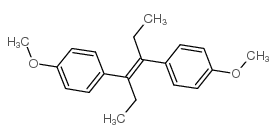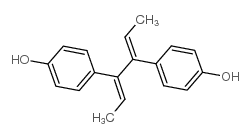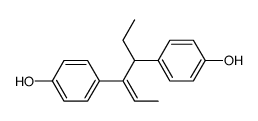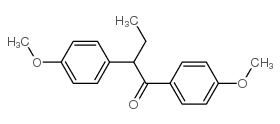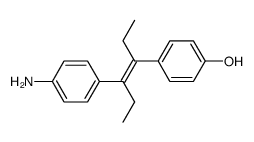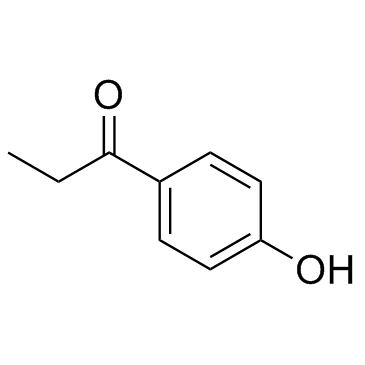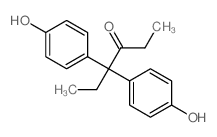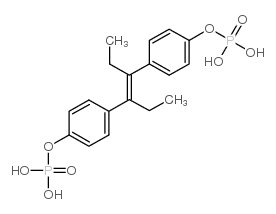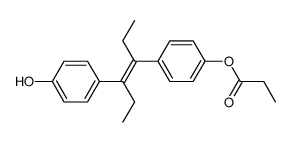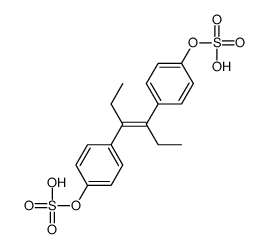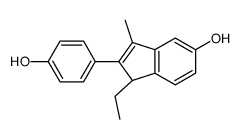56-53-1
| Name | diethylstilbestrol |
|---|---|
| Synonyms |
Stilboesterol
trans-Diethyl Stilbestrol Stil Percutacrine Oestrogenique Iscovesco Sibol 4,4'-Stilbenediol, α,α'-diethyl-, (E)- stilboestrol 4,4'-hex-3-ene-3,4-diyldiphenol cyrena Synthestrin Monozol Diethylstilbestrol 4,4'-Stilbenediol, α,α'-diethyl- Phenol, 4,4'-[(E)-1,2-diethyl-1,2-ethenediyl]bis- 4,4'-(3E)-hex-3-ene-3,4-diyldiphenol Estril (E)-3,4-Bis(p-hydroxyphenyl)-3-hexene Bufon Desma Cyren 4,4'-(1,2-diethyl-1,2-ethenediyl)bisphenol 4,4'-[(3E)-3-Hexene-3,4-diyl]diphenol a,a'-Diethylstilbenediol Estrogenine 4,4'-[(1E)-1,2-Diethyl-1,2-ethenediyl]bisphenol MFCD00002373 α,α'-Diethyl-4,4'-stilbenediol DES (E)-a,a'-Diethyl-4,4'-stilbenediol EINECS 200-278-5 trans-α,α'-Diethyl-4,4'-stilbenediol DES (VAN) 4,4'-Dihydroxy-a,b-diethylstilbene OeKolp |
| Description | Diethylstilbestrol, a synthetic nonsteroidal estrogen used in the treatment of menopausal and postmenopausal disorders.Target: Estrogen Receptor/ERRDiethylstilbestrol (DES), a synthetic estrogen that was used in pregnancy, is a prototype endocrine-disrupting chemical. Although prenatal exposure to DES is known to increase risks of vaginal/cervical adenocarcinoma and adverse reproductive outcomes in women, and urogenital anomalies in men, data on nonreproductive medical conditions are lacking. Comparing persons exposed prenatally to DES with those who were not exposed, the hazard ratios were 1.21 (95% confidence interval = 0.96-1.54) for diabetes, 1.27 (1.00-1.62) for all cardiovascular disease, 1.18 (0.88-1.59) for coronary artery disease, 1.28 (0.88-1.86) for myocardial infarction, 1.12 (1.02-1.22) for high cholesterol, 1.14 (1.02-1.28) for hypertension, 1.24 (0.99-1.54) for osteoporosis, and 1.30 (0.95-1.79) for fractures. The associations did not differ by dose and timing of DES exposure, nor, in the women, by the presence or absence of vaginal epithelial changes (a marker of DES host susceptibility) [1]. The role of prenatal exposure to DES as an environmental risk factor for psychiatric disorders requires more evidence before any conclusions can be drawn [2]. |
|---|---|
| Related Catalog | |
| References |
| Density | 1.1±0.1 g/cm3 |
|---|---|
| Boiling Point | 407.1±25.0 °C at 760 mmHg |
| Melting Point | 170-172 °C(lit.) |
| Molecular Formula | C18H20O2 |
| Molecular Weight | 268.350 |
| Flash Point | 186.9±17.8 °C |
| Exact Mass | 268.146332 |
| PSA | 40.46000 |
| LogP | 5.93 |
| Vapour Pressure | 0.0±1.0 mmHg at 25°C |
| Index of Refraction | 1.603 |
| Storage condition | 0-6°C |
| Stability | Isomerizes rapidly in Benzene, Chloroform, and Ether.Keep Shielded from light. |
| Water Solubility | PRACTICALLY INSOLUBLE |
| Symbol |



GHS07, GHS08, GHS09 |
|---|---|
| Signal Word | Danger |
| Hazard Statements | H315-H319-H335-H350-H360-H410 |
| Precautionary Statements | P201-P280-P305 + P351 + P338-P308 + P313 |
| Personal Protective Equipment | dust mask type N95 (US);Eyeshields;Gloves;type P2 (EN 143) respirator cartridges |
| Hazard Codes | T:Toxic |
| Risk Phrases | R40;R45;R61;R36/37/38;R51/53 |
| Safety Phrases | S53-S36/37/39-S45-S60-S61 |
| RIDADR | UN 3077 9/PG 3 |
| WGK Germany | 3 |
| RTECS | WJ5600000 |
| Packaging Group | III |
| Hazard Class | 6.1(b) |
| HS Code | 2942000000 |
| Precursor 9 | |
|---|---|
| DownStream 10 | |
| HS Code | 2942000000 |
|---|


